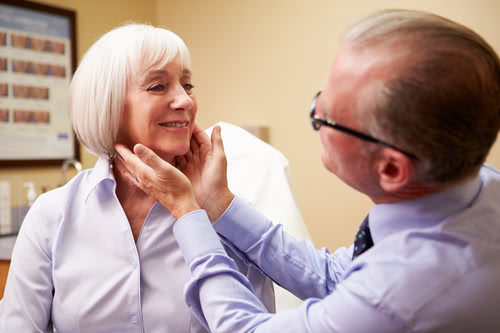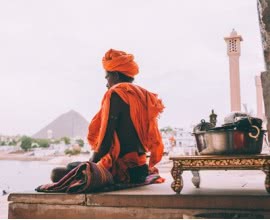A Chronological Look At The History of Medical Tourism
Medical tourism has a long history that dates back to the Ancient Times and its history had indicated that whenever healthcare has been inadequate or in short supply, the sick and injured would take to traveling to cure their various ailments.[1]

Medical Tourism in Ancient Times
Medicine and religion were closely interlinked during this period in history. The Sumerians, who lived round 4000B.C., were arguably the first civilization to discover the medicinal and therapeutic effects of thermal hot springs and thus built their health complexes near areas with these resources.
During the Bronze Age (2000B.C.), ancient hill tribes located in what is now modern day St. Moritz, Switzerland discovered the benefits of drinking and bathing in mineral springs.
The Ancient Greeks were the first civilization to construct a medical tourism network that was interwoven into their daily and religious lives. In honor Asclepius, the Greek God of Medicine, temples were built and people from various parts of the world would flock to these temples seeking medical advice and cures.
Dating back to over 5000B.C. in Ancient India, medical tourism came in the form of yoga and Ayurvedic medicine. Although considered an alternative form of medicine, it still attracted many medical tourists.
When Rome came into power, many hot-spring baths called thermae were erected and quickly became associated with the wealthy and rich. These bathhouses were commonplace social networking centers for the elite.[2]
Medical Tourism in the Middle Ages
Asia became the go-to destination for medical tourists after the Fall of Rome. In Medieval Japan, hot mineral springs known as onsen gained huge popularity throughout the country; and many warrior clans like the Samurai used these onsen to treat battle related wounds and pains.
In 1248A.D., the Mansuri Hospital was built in Cairo and enjoyed the privilege of being the largest and most advanced medical complex in the world as it had a holding capacity of 8,000 patients, resulting in medical tourists visiting Cairo.[3]
Medical Tourism During the Renaissance Period
The Renaissance Period (14th - 17th Century) saw medical tourism flourish, particularly in Europe. During the 16th century, Roman baths saw a revival as Europe's rich and elite rediscovered their uses and healing benefits. These bathhouses once again became the epicenter for the elite to congregate and socialize.
Luxury medical travel was a concept that was also introduced at this time - French inventor, Michel Eyquem de Montaigne, documented what is now known as the earliest spa travel guide in medical tourism history.[4]
Medical Tourism Post-Renaissance Period
Bath, England became the preferred medical tourist destination because of its numerous bathhouses and thus, became the first city in England with a comprehensive covered sewage system, paved roads, street lights and beautified hotels and restaurants. These advancements only served to amplify the city's attraction as a medical hub.[5]

Medical Tourism From the 1900s to 1997
Europe and America were not only industrial and economical powerhouses during this time, but they were also frontrunners of the healthcare industry where the wealthy could travel to receive high-end medical treatment.
In 1933, the American Board of Medical Specialties (ABMS) was established and this organization developed educational and professional medical policies that are now used throughout the world. The European Union of Medical Specialties (UEMS) was established in 1958.
Yoga and Ayurvedic medicine saw a revival in India during the 1960s where a New Age Movement gained popularity. The country became the go-to alternative medical tourist destination among Britain and America's elite.
Central America saw a surge in their medical industry during the 1980s and 1990s when healthcare became increasingly expensive in America. Countries like Cuba developed programs for eye, heart and cosmetic surgical procedures to entice foreigners.[6]
Medical Tourism from 1997 and Beyond
The Economic Crisis in Asia in 1997 saw many Asian governments seeking alternative ways to boost their economy. Thailand became a popular destination for medical tourists seeking plastic surgery as the procedures cost a fraction of what they would have cost in other Western Countries.
The emergence of multiple healthcare providers worldwide resulted in the creation of the Joint Commission International (JCI). The aim of this organization was to evaluate international healthcare facilities for conformance to international standards.
Asia and Latin America enjoyed an increase in profits in their cosmetic and dental surgery industry post 9/11. JCI accredited countries like Singapore, Thailand and India saw a boom in their medical industry as patients from many Western countries flocked to Asia for various medical treatments.[7]
The number of medical tourists continue to grow, and as healthcare companies and insurance companies, especially from America and Europe, begin outsourcing their services, it only encourages the continuing growth of medical tourism around the world.
Sources:
[1] 'The History of Medical Tourism' in Health-Tourism.com, viewed on January 13, 2016, https://www.health-tourism.com/medical-tourism/history/
[2] ibid
[3] ibid
[4] 'The History of Medical Tourism' in Health-Tourism.com, viewed on January 13, 2016, https://www.health-tourism.com/medical-tourism/history/
[5] ibid
[6] ibid
[7] 'The History of Medical Tourism' in Health-Tourism.com, viewed on January 13, 2016, https://www.health-tourism.com/medical-tourism/history/














